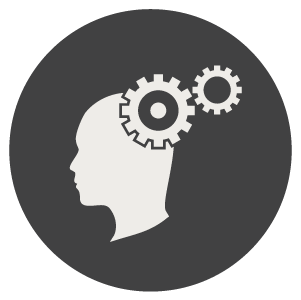Burnt the F Out
Do you feel like it takes every fibre of your being to complete a task at work? Do you only have enough energy left at the end of the day to lay on the couch and watch Netflix? Are you re-reading this paragraph already or know you won’t make it to the end of this blog? You may be experiencing burnout.
What is burnout?
Christina Maslach, Ph.D., a professor at UC Berkeley, describes it as, “a psychological syndrome emerging as a prolonged response to chronic interpersonal stressors on the job.” In other words, burnout is when we lose the ability to cope with chronic stressors in our life. While much of the language around burnout talks about work, I think it is important to recognize that burnout can also come from long-term exposure to emotionally demanding situations. Since its recognition almost 40 years ago, burnout has just now been added to the 11th revision of the International Classification of Disease by the World Health Organization (WHO).
Burnout, Stress, and Depression
Burnout, stress, and depression all share similar features and overlap in many aspects, however, it is important to recognize that they are still distinct entities. Stress and burnout have a very close relationship, in that burnout arises from too much chronic stress, but having stress does not necessarily equate to burnout. Think of it like the old glass half empty glass half full analogy. Stress can sometimes add liquid or take away liquid, but with burnout, our glass has a hole, so it always remains empty. This means that we need to learn how to be cognitively aware of how stress is affecting us.
Depression and burnout also share very similar presentations: apathy, irritability, and fatigue to name a few. In fact, psychiatrists treat burnout and depression similarly, perhaps because depression is considered a medical disorder, but burnout is a “phenomenon” so it gets lumped in with depression. One of the defining differences between the two is that depression will persist, regardless of leaving work or the stressful situation, whereas burnout can be alleviated when these things change. Even the research has observed that burnout and depression are different, so by equipping ourselves with strategies to promote a healthier work-life integration we can alleviate burnout and get back to our usual selves.
Presentation of burnout
Burnout can be thought of as overwhelming exhaustion, feelings of cynicism and detachment from work, and a sense of ineffectiveness and lack of accomplishment. This means that you may see or feel:
Mentally exhausted, even after having a good night's rest
It may take longer to complete simple tasks
No motivation to do anything, especially anything work-related
Frequent headaches
Increased irritability, usually things will set you off that hasn't bothered you before
Constant frustration
Feel helpless, not in control or trapped in your situation
Isolating yourself from others
Thinking or worrying about work when you are not at work
Even when something goes right, there is no satisfaction or sense of accomplishment
Learn more through our podcast episode Is burnout about the workplace or the people? with the Science of Work Podcast. Or start learning with the Burnout Self-Paced Course.
Inspired By…
Ciampi, Robert. “Stress and Burnout.” Psychology Today, 6 Dec. 2019, www.psychologytoday.com/ca/blog/when-call-therapist/201912/stress-and-burnout.
Golkar, Armita, et al. “The Influence of Work-Related Chronic Stress on the Regulation of Emotion and on Functional Connectivity in the Brain.” PLoS ONE, edited by Daniel Margulies, vol. 9, no. 9, 2014. Crossref, doi:10.1371/journal.pone.0104550.
Jonsdottir, Ingibjörg H., and Anna Sjörs Dahlman. “Mechanisms in Endocrinology: Endocrine and Immunological Aspects of Burnout: A Narrative Review.” European Journal of Endocrinology, vol. 180, no. 3, 2019, pp. R147–58. Crossref, doi:10.1530/eje-18-0741.
Koutsimani, Panagiota, et al. “The Relationship Between Burnout, Depression, and Anxiety: A Systematic Review and Meta-Analysis.” Frontiers in Psychology, vol. 10, 2019. Crossref, doi:10.3389/fpsyg.2019.00284.
Kwartier, Mijn. “Difference between Stress and Burnout?” 15 Minutes 4 Me, 1 Aug. 2019, www.15minutes4me.com/difference-stress.
Maslach, Christina. “Engagement Research: Some Thoughts from a Burnout Perspective.” European Journal of Work and Organizational Psychology, vol. 20, no. 1, 2011, pp. 47–52. Crossref, doi:10.1080/1359432x.2010.537034.
---. “Making a Significant Difference with Burnout Interventions: Researcher and Practitioner Collaboration.” Journal of Organizational Behavior, vol. 33, no. 2, 2011, pp. 296–300. Crossref, doi:10.1002/job.784.
Maslach, Christina, and Susan E. Jackson. “The Measurement of Experienced Burnout.” Journal of Organizational Behavior, vol. 2, no. 2, 1981, pp. 99–113. Crossref, doi:10.1002/job.4030020205.
Maslach, Christina, and Michael P. Leiter. “Understanding the Burnout Experience: Recent Research and Its Implications for Psychiatry.” World Psychiatry, vol. 15, no. 2, 2016, pp. 103–11. Crossref, doi:10.1002/wps.20311.
Ninnivaggi, Frank. “Depression and Burnout.” Psychology Today, 7 Nov. 2019, http://www.psychologytoday.com/ca/blog/envy/201911/depression-and-burnout
Robinson, Bryan. “Two-Thirds Of Workers Experienced Burnout This Year: How To Reverse The Trend In 2020.” Forbes, 12 Dec. 2019, http://www.forbes.com/sites/bryanrobinson/2019/12/08/two-thirds-of-workers-experienced-burnout-this-year-how-to-reverse-the-trend-in-2020/#4b6780857974
Savic, Ivanka. “Structural Changes of the Brain in Relation to Occupational Stress.” Cerebral Cortex, vol. 25, no. 6, 2013, pp. 1554–64. Crossref, doi:10.1093/cercor/bht348.
Smith, Melinda, et al. “Burnout Prevention and Treatment.” Help Guide, Oct. 2019, http://www.helpguide.org/articles/stress/burnout-prevention-and-recovery.htm
World Health Organization. “Burn-out an ‘Occupational Phenomenon’: International Classification of Diseases.” World Health Organization, 28 May 2019, http://www.who.int/mental_health/evidence/burn-out/en

